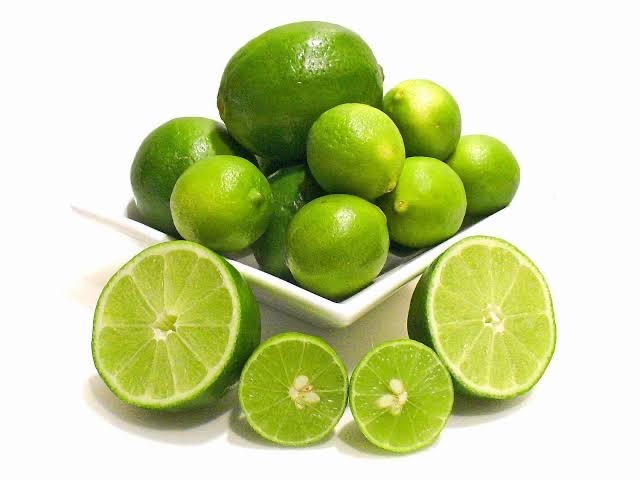Limes are a popular citrus fruit known for their vibrant green color and tart, tangy flavor. They are used globally in a variety of culinary and beverage applications, adding a zesty punch to dishes and drinks. While most people are familiar with the common Persian lime, there are several other types of limes, each with its own unique characteristics and uses. Here’s an overview of the different types of limes.
Persian Lime

Scientific Name: Citrus × latifolia
Characteristics:
– The most common type of lime found in grocery stores.
– Medium to large in size with a thick, green rind that turns yellow when fully ripe.
• Seedless and juicy with a slightly less acidic flavor compared to other limes.
Uses:
– Widely used in cooking, baking, and cocktails.
– Common in marinades, salad dressings, and as a garnish for drinks.
Key Lime


Scientific Name: Citrus × aurantiifolia
Characteristics:
– Smaller and rounder than Persian limes.
– Thin, smooth skin that turns from green to yellow as it ripens.
– More aromatic, with a strong, tart flavor and higher acidity.
Uses:
– Essential for making Key lime pie.
– Popular in cocktails, especially margaritas and mojitos.
– Used in marinades and as a seasoning for seafood dishes.
Kaffir Lime

Scientific Name: Citrus hystrix
Characteristics:
– Small and bumpy with a thick, green rind.
– Known for its intensely aromatic leaves rather than the fruit itself.
– The fruit is very sour and less commonly used compared to the leaves.
Uses:
– Kaffir lime leaves are a staple in Southeast Asian cuisine, used in soups, curries, and stir-fries.
– The zest and juice can be used in some traditional dishes and beverages.
Finger Lime

Scientific Name: Citrus australasica
Characteristics:
– Small and elongated, resembling a finger.
– Thin, green to reddish-brown skin with caviar-like vesicles inside.
– The vesicles burst with a tart, lemon-lime flavor.
Uses:
– Popular as a garnish for dishes, adding a unique texture and flavor.
– Used in seafood dishes, salads, and desserts.
– Often featured in gourmet cuisine and cocktails.
Sweet Lime

Scientific Name: Citrus limettioides
Characteristics:
– Larger and rounder with a yellowish-green rind.
– Sweeter and less acidic than other limes, with a mild, floral flavor.
– Often seedless or with few seeds.
Uses:
– Consumed fresh or juiced.
– Used in beverages and desserts where a less tart flavor is desired.
– Popular in Middle Eastern and Indian cuisines.
Calamansi

Scientific Name: Citrus × microcarpa
Characteristics:
– Small and round, similar in size to a golf ball.
– Thin, smooth skin that turns orange when ripe.
– Extremely tart, with a flavor profile that combines lime and mandarin orange.
Uses:
– Common in Filipino cuisine for marinades, sauces, and beverages.
– Used to add acidity to dishes and as a flavoring for drinks.
Limes are a versatile and essential fruit in many culinary traditions, offering a wide range of flavors and uses. From the ubiquitous Persian lime to the exotic finger lime, each type brings its own unique taste and characteristics to the table. Whether you’re cooking, baking, or mixing up a cocktail, there’s a lime variety that can enhance your culinary creations with its distinctive zest and aroma.
Pingback: Limequats: The Flavorful Hybrid Citrus - SimplExplainer
Pingback: Key Limes: A Zesty Citrus Delight
Pingback: Kaffir Limes: A Fragrant Citrus Treasure - SimplExplainer
Pingback: Finger Limes: The Caviar of Citrus - SimplExplainer
Pingback: Blood Limes Citrus - SimplExplainer
Pingback: Limequats Hybrid Citrus - SimplExplainer
Pingback: Key Limes Citrus - SimplExplainer
Pingback: Persian Limes Citrus - SimplExplainer
Pingback: Finger Limes Citrus - SimplExplainer
Pingback: Sweet Lime Citrus - SimplExplainer